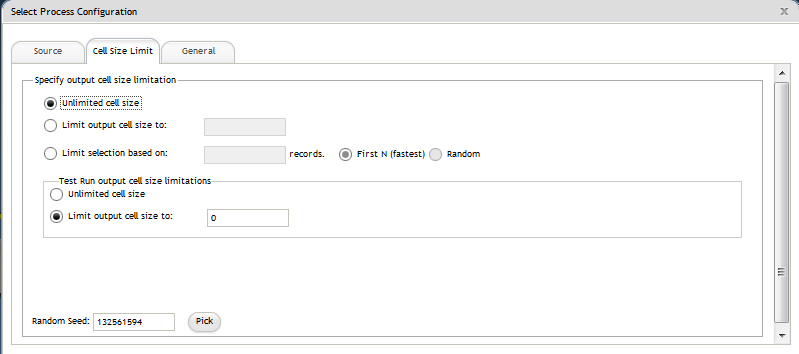
|
|
Unlimited cell size: Returns all IDs that meet the query or selection criteria. This option is the default.
|
|
|
Limit output cell size to: Returns no more than the specified number of unique IDs, selected randomly from all IDs that meet the query criteria. In the text box, enter the maximum number of IDs that you want returned. Campaign deduplicates the complete set of IDs before random selection, then retains only the specified number of records, so that a list of unique IDs is returned even when duplicates exist on the ID fields. This option uses a large amount of temporary space and takes the most time because all IDs must be retrieved to the Campaign server. Use this option only when the data is not normalized on the ID field and if it is important that exactly N records are returned.
|
|
|
Limit selection based on: Use this option to limit records that meet your query criteria. This option reduces the time and memory that are required to select the final set of records. However, it can result in fewer than the specified number of unique IDs.
|
|
|
First N (fastest): Campaign retrieves from the database only the first N records that meet your query criteria. Campaign then deduplicates these IDs. If the data is not normalized, then the final result contains fewer than the requested number of unique records. This method is the fastest because it takes less time to retrieve data and uses less temporary space.
|
|
|
Random: Campaign retrieves from the database all records that meet your query criteria, then randomly selects the number of records requested. Campaign then deduplicates those IDs. If the data is not normalized, the final result contains fewer than the requested number of unique records. This option uses less temporary space because only the randomly selected records are retrieved and stored by Campaign.
|
|
Copyright IBM Corporation 2015. All Rights Reserved.
|